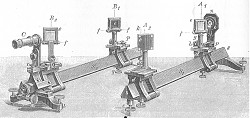Novel quantum-based precision measurement tools
Historically and still currently, one of the most powerful and precise measurement techniques is interferometry, with interferometers providing the most precise measures of time, frequency and inertial forces. In a interferometer, two probe (light or matter) waves undergo a phase shift that generates observable interference effects: the aim of interferometry is measuring these effects in order to estimate the phase shift with the smallest possible uncertainty. The aim of the QIBEC project has been to investigate and develop ultra-precise interferometers that exploit the resources available in the quantum world. ‘In these quantum interferometers, very small forces or accelerations can be precisely inferred from the effect they produce on an exotic quantum state of matter called Bose-Einstein condensate (BEC),’ explained project coordinator Dr Augusto Smerzi of the Italian National Research Council that spearheaded the project. ‘This is obtained by cooling a dilute gas of a suitable atomic species down to temperatures very close to the absolute zero.’ While the atoms in a gas at higher temperature bump chaotically into each other at very large speeds, the atoms in a BEC are considerably slower and move in a much more orderly fashion. Manipulating multi-particle entanglement More specifically, the project’s breakthrough was to generate and manipulate massive multi-particle entanglement with atomic BECs and realise robust entanglement-enhanced interferometers for metrology and weak-forces detection with ‘sub-shot-noise sensitivity’, which means performances going beyond the classical limit of shot noise. ‘We actually wanted to challenge the opinion of a large part of the BEC community that trapped BEC gasses are not very useful for metrology because of low atom number and dephasing due to interaction,’ commented Dr Smerzi. ‘Using BECs, we have employed novel techniques to reduce both technical and more fundamental noise sources such as mechanical vibrations, magnetic fields fluctuations, and atom losses.’ The project team also experimentally proofed the simultaneous operation of interferometers to be employed for the precise measurement of inertial, gravitational and electromagnetic forces. ‘While being in principle able to reach a single-shot sensitivity to forces comparable with the state-of-the-art free-falling interferometers, the measurement device obtained by diluting a BEC over a controllable optical lattice potential offers the possibility of addressing the multipole expansion (a mathematical function that depends on angles, where the fields at distant points are given in terms of sources in a small region),’ explained Dr Smerzi. Whilst no commercialisation or patent arose from the project (the project’s focus was scientifically-oriented), concrete applications of the fundamental work done by QIBEC team could be developed in the future. Dr Smerzi states. ‘One can imagine microscopic trapped interferometers that might outperform state-of-the-art atomic interferometers by exploiting long measurement times and parallelisation schemes, leading to a new generation of microscopic inertial force sensors.’ The QIBEC project finished in July 2015 has received around EUR 2 600 000 in EU funding.
Keywords
QIBEC, BEC, Bose-Einstein condensate, interferometry, entanglement, quantum sensing, FET (Future and Emerging Technologies)

